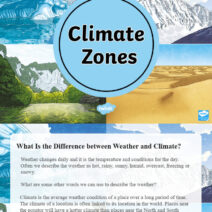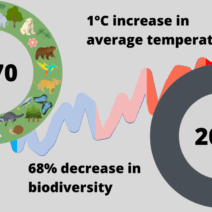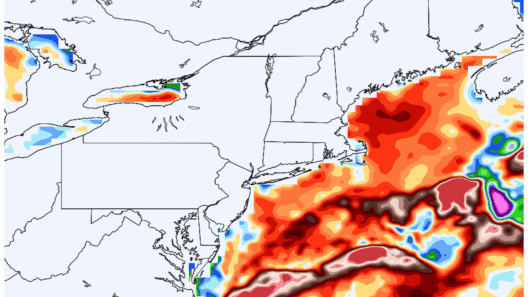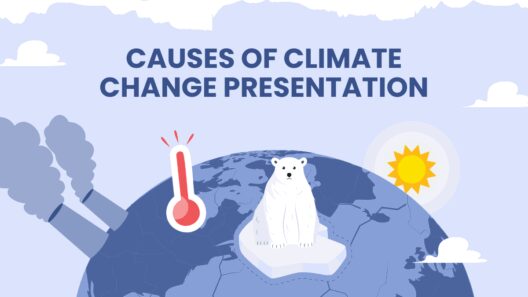Transportation is an intricate web of arteries that connects our bustling cities to serene countryside, yet it is this very system that is weaving a tapestry of discontent for our planet. From the hum of diesel engines to the screech of tires on asphalt, our transportation methods not only facilitate mobility but also contribute significantly to climate change. As we dissect the pathways leading to this climatic catastrophe, it becomes evident that the impact of transportation extends far beyond mere vehicular emissions.
At the outset, it is paramount to acknowledge that transportation is a leading contributor to greenhouse gas emissions. In fact, according to the Environmental Protection Agency, the transportation sector is responsible for nearly 29% of total greenhouse gas emissions in the United States alone. This statistic represents a grim reality where cars, trucks, and planes shed carbon dioxide (CO2) into the atmosphere, creating a thickening cloud that insulates the Earth and warms the climate. The metaphorical carapace we have constructed around ourselves is suffocating the delicate balance of our ecosystem.
As we pivot to personal vehicles, the modern automobile often embodies the quintessential image of convenience; combined with the allure of speed, it has become a necessity for many. However, the interminable queue of cars that stretches for miles is reminiscent of an oversized serpent, choking the arteries of our cities. Each car, while seemingly harmless, contributes to a cumulative effect—an avalanche of smog that engulfs urban landscapes. The emissions released from these vehicles are not simply invisible gases; they are tangible threats to public health and the environment, exacerbating respiratory diseases and increasing the frequency of extreme weather phenomena.
Moreover, transportation infrastructure, such as highways and roads, magnifies the ecological footprint of our society. The construction of these expansive thoroughfares results in habitat destruction, forcing wildlife to adapt—or perish—in the face of encroaching asphalt jungles. Highways act as both physical barriers and conduits for pollution, creating an inhospitable environment for countless species. The metaphor of roads as conduits is apt; they channel not just the flow of human movement but also the effluents of our industrialized society—littered with the detritus of consumer culture.
Diving deeper into our societal reliance on transportation, the aviation sector emerges as a particularly potent agent of climate change. Air travel produces a staggering amount of emissions, with a single transatlantic flight emitting as much CO2 as the average person produces in a year. As people flock to airports, they often remain blissfully unaware of the inviolate impact of their journeys. The skies are not limitless; they too suffer from the weight of our choices. Each flight we take is akin to dumping a bucket of ice into the ocean, disrupting existing thermal balances and contributing to a cascade of climatic consequences.
Public transportation offers a flicker of hope on this otherwise dark horizon. Trains, buses, and subways present an opportunity to mitigate individual carbon footprints; they foster not only communal transit but also a reduction in per capita emissions. However, these systems often suffer neglect and underfunding. Investing in efficient public transit can be viewed as a symphony that harmonizes convenience with sustainability. When cities prioritize public transportation, they are not merely improving transit times; they are underwriting a legacy of climate mindfulness. Sustainability in transportation can become a melody—a harmonious refrain echoing through generations to come.
Furthermore, the emergence of electric vehicles (EVs) symbolizes a significant shift; they embody the quest for an environmentally conscientious alternative. Yet, the silver lining can be tarnished if the electricity fueling these vehicles derives from fossil fuels. The epiphany lies in not merely transitioning to electric power but ensuring that the grid itself is sustainable. The electric vehicle revolution must be in harmony with renewable energy sources; otherwise, it risks becoming a false idol in our collective pursuit of sustainability.
As we traverse the landscape of transportation and its impact on climate change, we encounter an intricate interplay of choices and consequences. The decisions made today affect the nebulous tapestry of tomorrow’s weather patterns, flora, and fauna. Climate change is not a distant specter; it has become an imminent threat, and the choices we make about how we travel are at the forefront of this reality.
In conclusion, as we navigate the complexities of transportation, it is imperative to cultivate an awareness that transcends personal convenience. Each mode of transport presents both a challenge and an opportunity. The roads we travel shape our climate, and it is the cumulative effect of our transit habits that drives the tide of climate change. By adapting our transportation policies to embrace sustainability, prioritizing public transit, investing in electric infrastructure, and understanding the broader ecological impact of our choices, we can transform our roads from conduits of pollution into pathways toward a healthier, more resilient planet. In the relentless pursuit of progress, let us remember that our real journey must lead back to the stewardship of our shared Earth.








